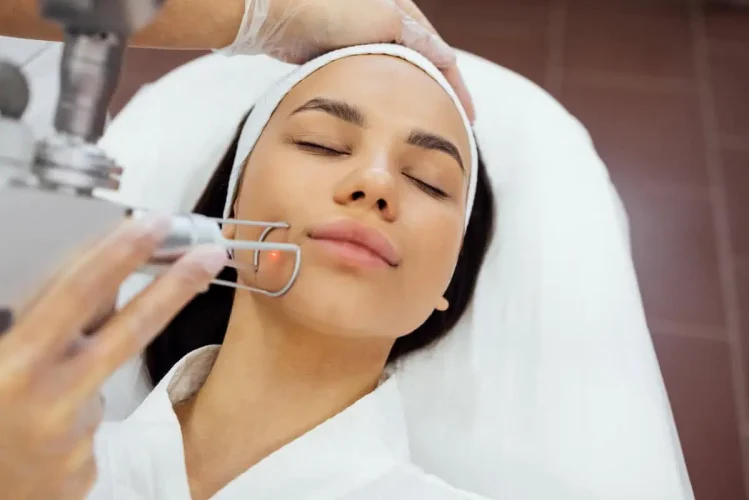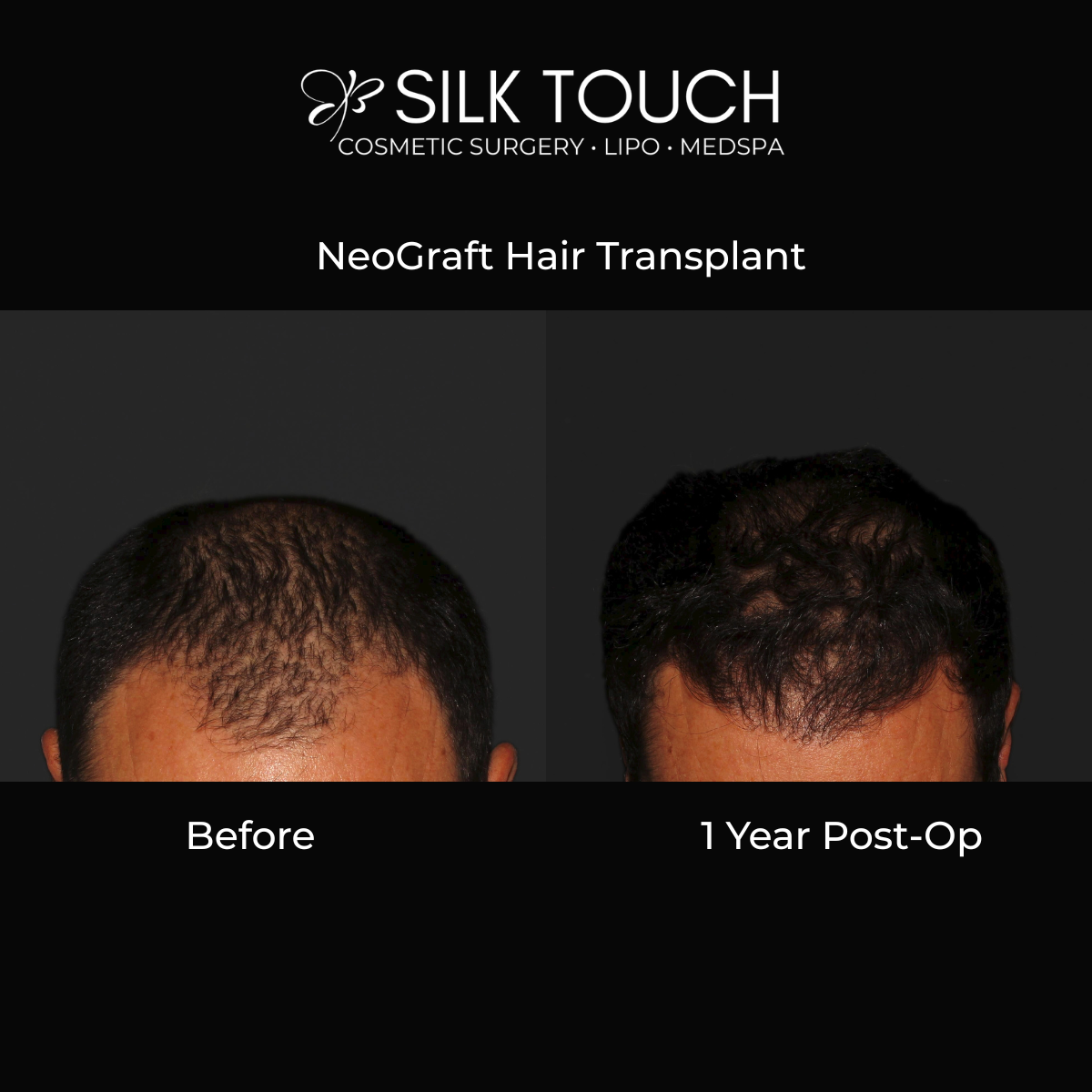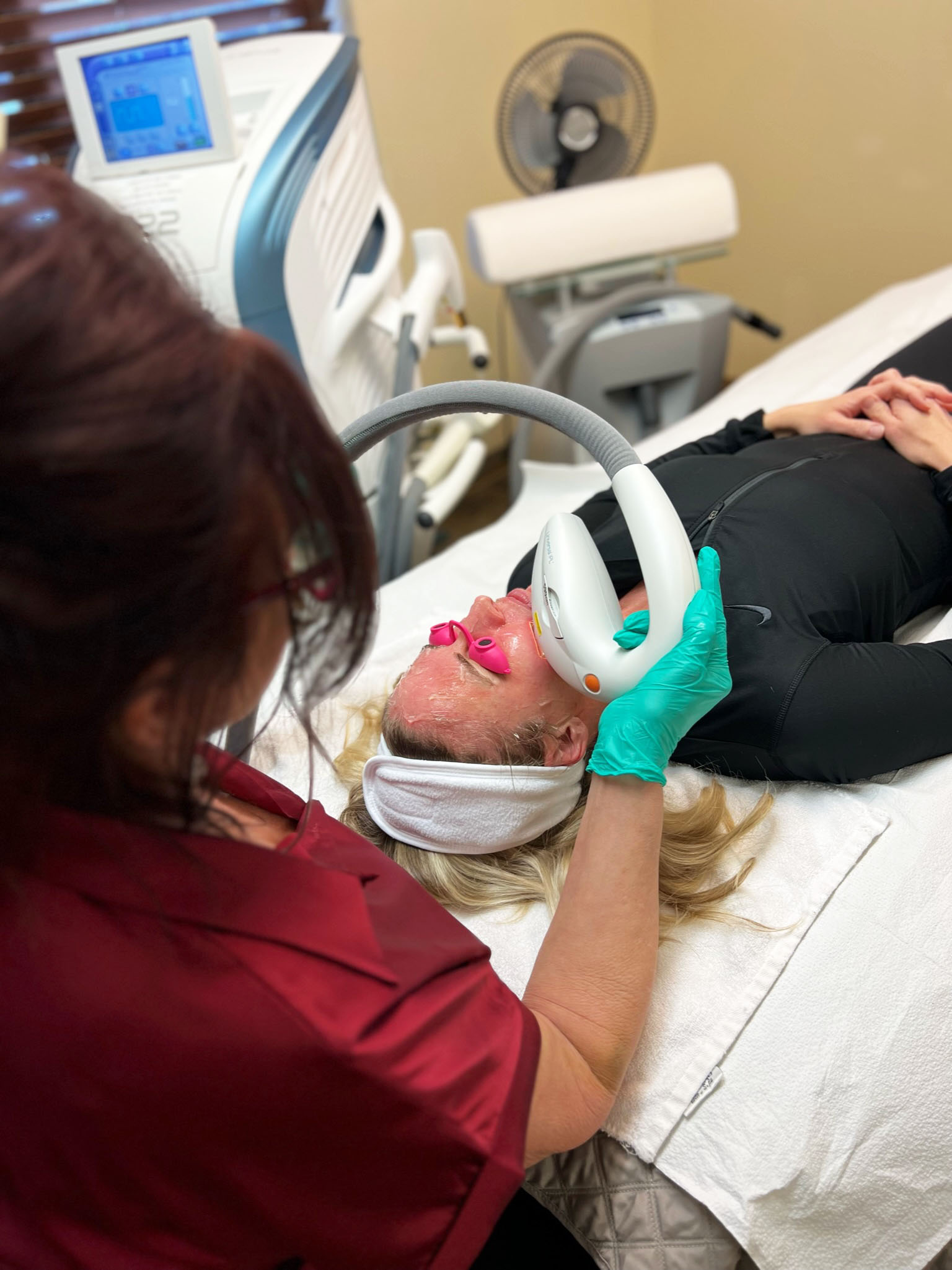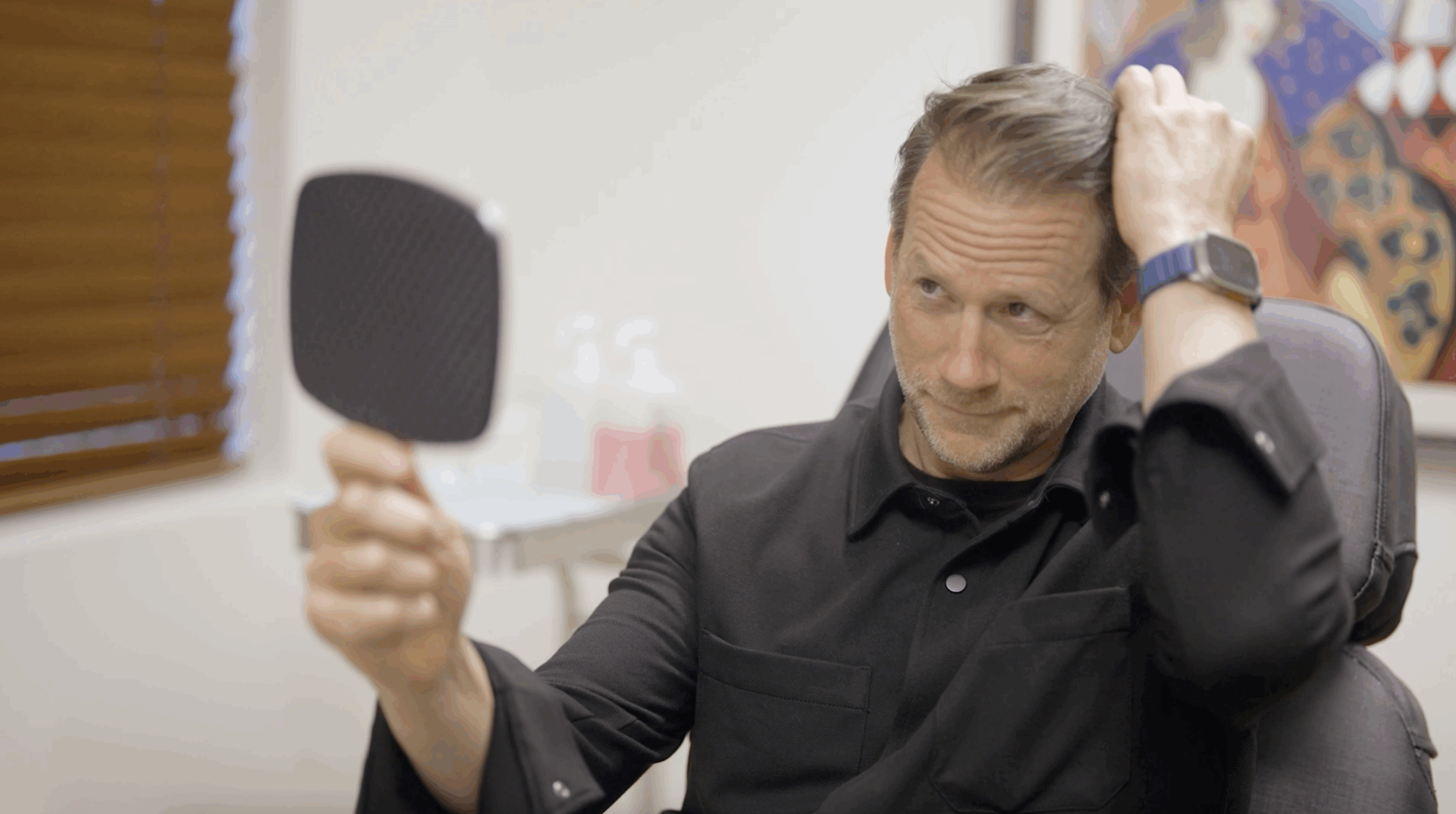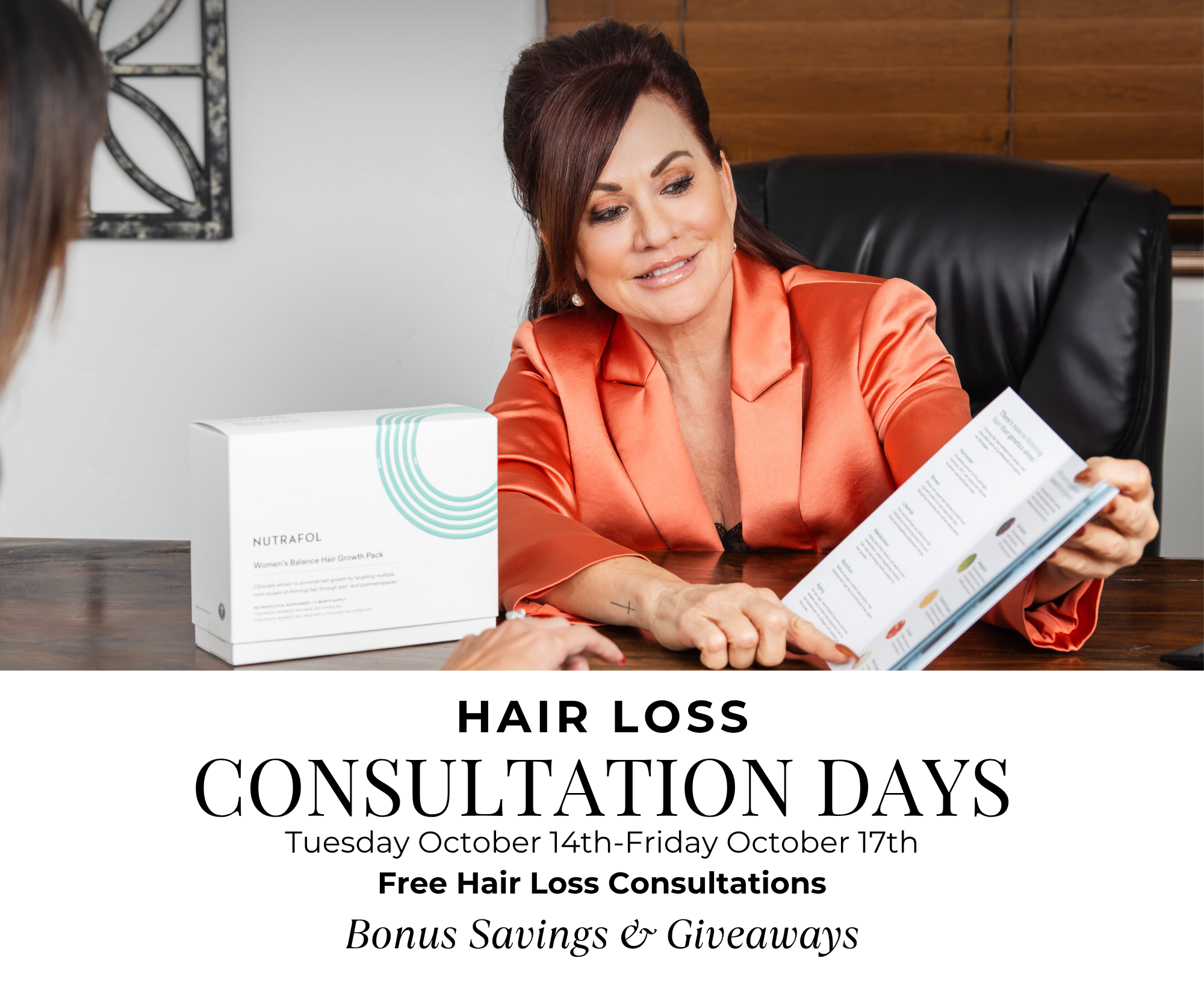If you’ve been exploring advanced solutions for smoother, younger-looking skin, CO2 Laser resurfacing has likely popped up on your radar. Known for its dramatic rejuvenation effects, this laser skin resurfacing treatment uses fractional ablative technology to reduce wrinkles, minimize scars, and restore healthy, radiant skin. But is it really worth the downtime and commitment?
At Silk Touch Cosmetic Surgery, Lipo, & Medspa, we offer a state-of-the-art approach by combining the Alma Hybrid CO2 Laser with a 1570nm non-ablative laser, giving patients the best of both worlds: deep collagen renewal and faster recovery. In this post, we’ll break down how this treatment works, who it’s best suited for, and what CO2 laser before and after results actually look like—so you can decide if it’s the right path for your skin goals.
What Is CO2 Laser Resurfacing?
CO2 Laser resurfacing is a powerful aesthetic procedure that uses concentrated carbon dioxide laser energy to vaporize damaged skin layers. This process:
- Smooths texture by removing aged cells.
- Stimulates collagen for firmer, more youthful skin.
- Encourages deep healing and visible rejuvenation.
At Silk Touch, we amplify this process with the Alma Hybrid system, blending ablative CO2 and non-ablative 1570nm wavelengths for better results with shorter recovery.
Whether you’re looking to reduce scarring, wrinkles, or pigmentation, the Alma Hybrid CO2 Laser in Boise, ID, offers a custom-tailored approach to full-face renewal.
What Are the Benefits of CO2 Laser?
Patients choose this treatment for a reason—results speak for themselves. Benefits of CO2 Laser resurfacing include:
- Reduction of fine lines and deep wrinkles: Especially effective around the eyes and mouth.
- Tighter, firmer skin: Perfect for mild to moderate laxity due to aging.
- Improved tone and texture: Skin looks smoother and more radiant.
- Fading of acne scars: CO2 laser for acne scars works by promoting cellular turnover and collagen repair.
- Diminished sunspots and pigmentation: Evens out blotchy, sun-damaged skin.
The hybrid laser approach also makes CO2 laser for skin tightening a viable, non-surgical option for many.
The Alma Hybrid Advantage
Traditional laser skin resurfacing could be uncomfortable and require weeks of recovery. Our modern solution—Alma Hybrid—delivers powerful rejuvenation while preserving your comfort and lifestyle.
What makes it different?
- CO2 Laser: Targets surface imperfections, triggers exfoliation, and boosts collagen.
- 1570nm Non-Ablative Laser: Heats the deeper dermis for lasting firming and tightening without damaging the surface.
This combination allows us to tailor the treatment based on skin tone, depth of concerns, and individual healing capacity.
Real Patient Results: Before & After Insights
At Silk Touch Cosmetic Surgery, Lipo, & Medspa, we’ve seen firsthand how transformative this procedure can be. Below is a snapshot of a typical healing and improvement timeline:
CO2 Laser Before and After: What to Expect
Day 1–2
- Redness and swelling appear, similar to a sunburn.
- Skin feels tight and warm.
Day 3–5
- Flaking, peeling, and light crusting as dead skin sloughs off.
- Skin reveals a pink, fresh layer underneath.
Week 1–2
- Most peeling subsides.
- Pinkness fades and can be concealed with makeup.
1 Month+
- Collagen kicks in for smoother skin.
- Lines soften and scars fade.
3–6 Months
- Final results settle in: skin looks visibly younger, tighter, and more even.
- This is when many patients realize just how powerful CO2 laser for wrinkles can be.
Who Should Consider CO2 Laser Resurfacing?
This treatment is ideal for patients who are:
- Noticing deeper facial wrinkles or laxity.
- Dealing with lingering acne scars from years past.
- Struggling with sun damage, dark spots, or rough skin texture.
- Looking for a non-surgical way to tighten and lift the skin.
- Committed to a short downtime period in exchange for dramatic results.
It’s also a great choice for people who’ve tried other aesthetic treatments without seeing meaningful long-term improvements.
During your consultation for CO2 Laser in Boise, ID, we’ll assess your skin type, medical history, and cosmetic goals to determine if this is the best option for you.
Recovery & Aftercare Tips
Healing time after a CO2 Laser session will depend on how aggressive the treatment is. Fortunately, the Alma Hybrid system allows us to control depth and intensity for a more predictable recovery.
Here are key aftercare tips:
- Avoid sun exposure during healing (and wear SPF daily afterward).
- Use gentle, fragrance-free cleansers and moisturizers.
- Apply soothing ointments as recommended.
- Stay hydrated and skip harsh skincare ingredients until cleared.
- Follow your provider’s instructions closely to avoid pigmentation issues or delayed healing.
Why the Results Are Worth the Wait
Unlike topical treatments or superficial facials, CO2 Laser resurfacing rebuilds the skin’s support structure from the inside out. It’s a reset button for your complexion—and the results aren’t just temporary.
Patients consistently report:
- Feeling more confident in makeup-free skin.
- Seeing noticeable improvements after a single session.
- Receiving compliments months after treatment.
And because it continues to stimulate collagen, the skin keeps improving long after the treatment ends.
Let’s Bring Your Skin Goals to Life
The truth? CO2 Laser resurfacing isn’t just about looking younger—it’s about feeling better in your own skin. Whether you’re battling deep wrinkles, acne scars, or stubborn texture, this treatment offers a solution that’s both science-backed and beautifully personalized.
At Silk Touch Cosmetic Surgery, Lipo, & Medspa, our team of medical professionals is ready to help you navigate the options and create a treatment plan that fits your timeline, skin type, and lifestyle.
Get Glowing Skin – Book Now! Reclaim Your Radiance with CO2 Laser in Boise, ID
You deserve skin that reflects how vibrant and confident you feel. Book your personalized consultation at Silk Touch today and explore the real results possible with CO2 Laser resurfacing. It’s more than a treatment—it’s a transformation.
